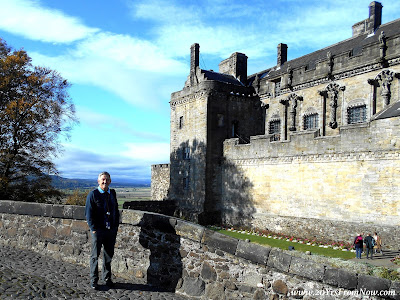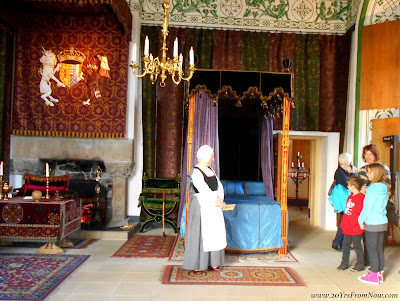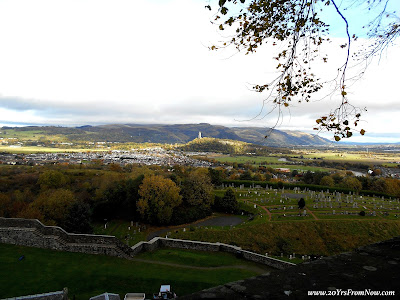The adage of real estate being all about location, location, location holds true with Stirling Castle.
Its scenic vistas rival the splendour of Edinburgh Castle and the surrounding highlands were undoubtedly the primary consideration for its construction. They are stunning, awe inspiring and make history all the more compelling.
Its scenic vistas rival the splendour of Edinburgh Castle and the surrounding highlands were undoubtedly the primary consideration for its construction. They are stunning, awe inspiring and make history all the more compelling.
The 360 degree views take one's breathe away and we were fortunate to see it on a gorgeous autumn day.
In the middle of the photo below is the monument to William Wallace. It's about five kilometres out of town and if we'd had more time we would certainly have ventured there.
Almost kitty corner to where the above photo was taken and at the far end of the castle proper is this section overlooking the highlands...
To the left is what is known as the King's Knot Gardens.
This next photo shows where the above photo was taken from...it's the balcony area behind John and to his left.
To his right is the entrance into the castle. We began our tour by walking through the archway.
Within the walls are the original buildings built to house a king's bride, Mary of Guise. Mother of Mary Queen of Scots, she became an influential ruler when her second husband, James V died in 1542. The yellow building below is covered with plaster and common for the medieval years. The yellow or gold suggested the wealth of the sovereign.
To the left of this building is where the kings and queens actually lived.
The interior rooms are impressive in both size and design. The kings rooms (below) are unfurnished because James V died before they were completed.
Mary of Guise's room, however, are lavish as she outlived James V by 18 years and lived alongside her daughter Mary Queen of Scots. When we entered the Queen's Chambers the first thing we noticed was the woman dressed in period clothing straightening the rug knots.
Below, after learning the girl visiting the castle is ten years old, she asks if her father has selected her future husband as was the custom during medieval times. As you might imagine the poor girl was speechless!
The next room is home to the Stirling tapestries. These new tapestries are duplicates of the original medieval tapestries and were completed in 2014. Woven by 18 weavers from across the globe this 14-year project to recreate the series of seven tapestries was the largest undertaking in over a century.
Returning outside is a third building, the chapel.
 |
| http://stirlingcastle.gov.uk |
The interior is massive and impressive.
The modern embroidered cloth at the front of the chapel was a work of art as shown below in the next two photos.
The final place of note in the castle is Douglas Gardens. The entrance illustrates the thickness of the castle walls.
Unfortunately, the gardens received their name after the 8th Earl of Douglas was assassinated by James II and his courtiers in February 1452. Supposedly an argument arose during dinner and Douglas was stabbed 26 times. Then his body is said to have been thrown from a window down to the area now known as Douglas Gardens.
The views from here are spectacular and if the travel gods are with us we'll return to Stirling one day and give this area the time and justice it deserves.
Our next stop? Edinburgh. Stay tuned!
* * *































